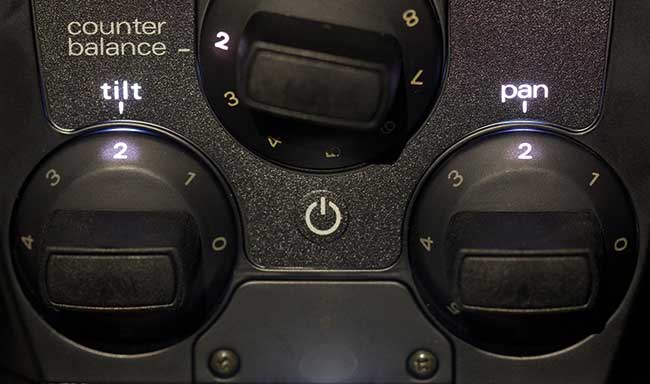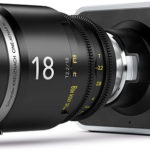
REVIEW: Miller CineLine 70 Tripod
Posted on Jun 14, 2015
The controls for pan and tilt fluid drag, and counterbalance, are all large, detented knobs (easy to use with gloves).
ADAM GARSTONE reviews the latest tripod technology from Miller in the year of their 60th celebrations. The Cineline 70 has comes along way since shoots in 1959 and 1965.
It’s worth remembering that Eric Miller invented the fluid head – as an alternative to the hand cranked, geared heads common in film-making before the 1950s – so it’s good to see the company he founded in 1954 back with a product aimed squarely at cinematic production.
The new Cineline 70 is a heavy-duty fluid head for cameras between 4.5kg and 37.5kg (depending on centre of gravity above the plate). It has a 150mm bowl and an adapter for Mitchell, flat base legs, and fits an Arri side load, quick release plate. The locking lever for the plate has a simple adjustment, so that if your plate is not quite standard size you’ll still get a tight lock. The sliding range is excellent (150mm).
The head itself is solidly engineered from alloy, with a few plastic details where strength isn’t an issue, and is sealed against dust and moisture. It has a front mount for an assistant’s accessory box, and dual side mounts for monitors and accessories. There are rosettes at each side of the rear of the head and the unit is supplied with a comfortable, telescoping pan bar.
The controls for pan and tilt fluid drag, and counterbalance, are all large, detented knobs (easy to use with gloves) and – along with the bubble – they can be illuminated. Unfortunately, the button to enable the illumination isn’t so easy to use wearing gloves – it’s a small, stiff membrane switch set between the knobs – but that’s a pretty minor gripe. The illumination is powered by a 12v alkaline battery, so if the one in the DoP’s light meter disappears, you know who’s nicked it.
The controls are set on the back of the head. As a matter of personal taste, I would have preferred these adjustments to be on the left side of the head.

The controls are set on the back of the head. As a matter of personal taste, I would have preferred these adjustments to be on the left side of the head. The left has three advantages – if you have a long camera body or the plate slid right back, you need to duck under it to get at the rear of the head; standing at the side of the camera with your eye to the eyepiece, your left hand is usually hovering around there somewhere; and it’s easier for the camera assistant to get to. One the other hand, to have all three controls in the same place, rather than scattered around the head, is a big positive, though it does make it easy to grab the counterbalance control by accident, when you are trying to tweak one of the others. Perhaps a lock on counterbalance would have been a good idea.
Although drag for both pan and tilt can be set at zero, you can’t completely turn off counterbalance – hence the minimum camera weight in the specification – though a Sony a7S would look a bit silly on a tripod this big, I guess.
Although drag for both pan and tilt can be set at zero, you can’t completely turn off counterbalance – hence the minimum camera weight in the specification – though a Sony a7S would look a bit silly on a tripod this big, I guess. After you have changed the drag setting, there is a little clunk when you next move the head, as the mechanism engages. After that, of course, movement is ultra-smooth without any play, but it is a little un-nerving at first. There is a tiny, tiny backlash when you take pressure off the bar at the end of a pan, but then most fluid heads do that.
Although I wasn’t able to lay my hands on anything that would tax its maximum payload, the Cineline 70 handled the weird, top heavy mass of an Eclair NPR (over 15kg) with style. A Blackmagic URSA (about 10kg) also felt great, but a Canon 1DX with lens and accessories – which tipped the scales just at the 4.5kg minimum – was nearly impossible to balance correctly.
The head’s action is exceptional, allowing for very smooth and accurate pans and tilts, particularly at the start and end of the move. Stability is also excellent – the review unit was supplied with MIller’s own carbon fibre tripod and there were no issues with any of the cameras we tried, even at long focal lengths. The brakes are positive and strong, and there is a separate full lock for tilt.
The Miller Cineline 70 is available for under £3500 (plus VAT) – for the head only – and includes a three year guarantee. That’s pretty good value for money, especially given the maximum weight it can handle, the beautiful fluid action and the overall engineering quality.








